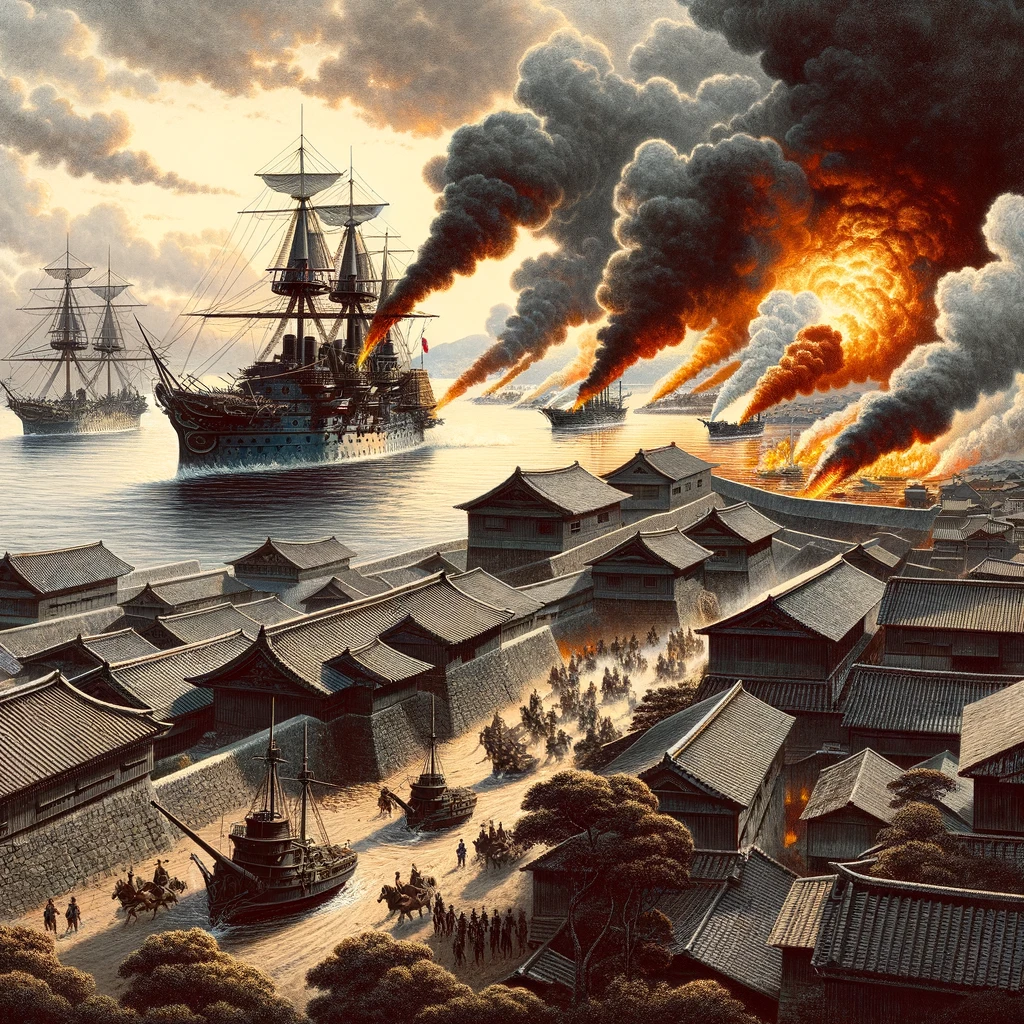The Anglo-Satsuma War, culminating in the Bombardment of Kagoshima in 1863, stands as a pivotal event in the complex history of Japan’s interactions with Western powers during the Bakumatsu period. This brief yet impactful conflict between the United Kingdom and the Satsuma Domain underlines the tensions, misunderstandings, and eventual transformations that characterized Japan’s journey towards modernization and the eventual Meiji Restoration.
Prelude to Conflict
The roots of the Anglo-Satsuma War can be traced back to an incident on September 14, 1862, known as the Namamugi Incident. Charles Lennox Richardson, a British merchant, along with three companions, encountered the procession of Shimazu Hisamitsu, the daimyo of Satsuma, while traveling on the Tokaido road near Yokohama. Disregarding the protocol that required pedestrians to kneel in respect, Richardson’s party continued on horseback, leading to a tragic confrontation where Richardson was killed, and two of his companions were wounded by the samurai escort.
The British government, outraged by the murder and the lack of immediate action by the Japanese authorities, demanded the Tokugawa shogunate (the de facto government of Japan at the time) to arrest and punish the culprits, and pay reparations of £100,000. The shogunate’s failure to comply fully, particularly in exerting influence over the semi-autonomous Satsuma Domain, led Britain to take unilateral military action.
The Bombardment of Kagoshima
In August 1863, a British Royal Navy squadron led by Admiral Sir Augustus Leopold Kuper sailed to Kagoshima, the capital of Satsuma, to demand justice and compensation. Negotiations quickly broke down, and on August 15, 1863, the British fleet opened fire on Kagoshima’s defenses, sparking an intense exchange of artillery fire. The conflict resulted in significant casualties and destruction on both sides, with the British employing their technological superiority to devastating effect, but also facing fierce resistance from Satsuma’s forces.
Consequences and Legacy
The Bombardment of Kagoshima had far-reaching consequences for both Japan and Britain. Surprisingly, it led to a rapid reconciliation between the two parties, with Satsuma agreeing to pay the demanded reparations and even entering into a productive trade relationship with Britain. This unexpected outcome was partly due to mutual respect gained during the conflict and Britain’s strategic interest in fostering relations with progressive elements within Japanese society, particularly those in Satsuma who were keen on modernizing Japan.
For Japan, the Anglo-Satsuma War and the Bombardment of Kagoshima were stark demonstrations of the West’s military and technological superiority. It underscored the urgent need for modernization and contributed to the growing momentum for the Meiji Restoration, which would occur just five years later in 1868. This event marked the beginning of Japan’s rapid transformation into a modern state and its emergence as a significant global power.

The Anglo-Satsuma War, although a brief episode, was a significant catalyst for change in Japan. It highlighted the inadequacies of the Tokugawa shogunate’s policies towards foreign powers and internal governance, setting the stage for the profound political, social, and economic reforms of the Meiji period. The Bombardment of Kagoshima remains a vivid symbol of the challenges Japan faced on its path to modernization and the complex interplay of conflict and cooperation that defined its relations with the West during this transformative era.
